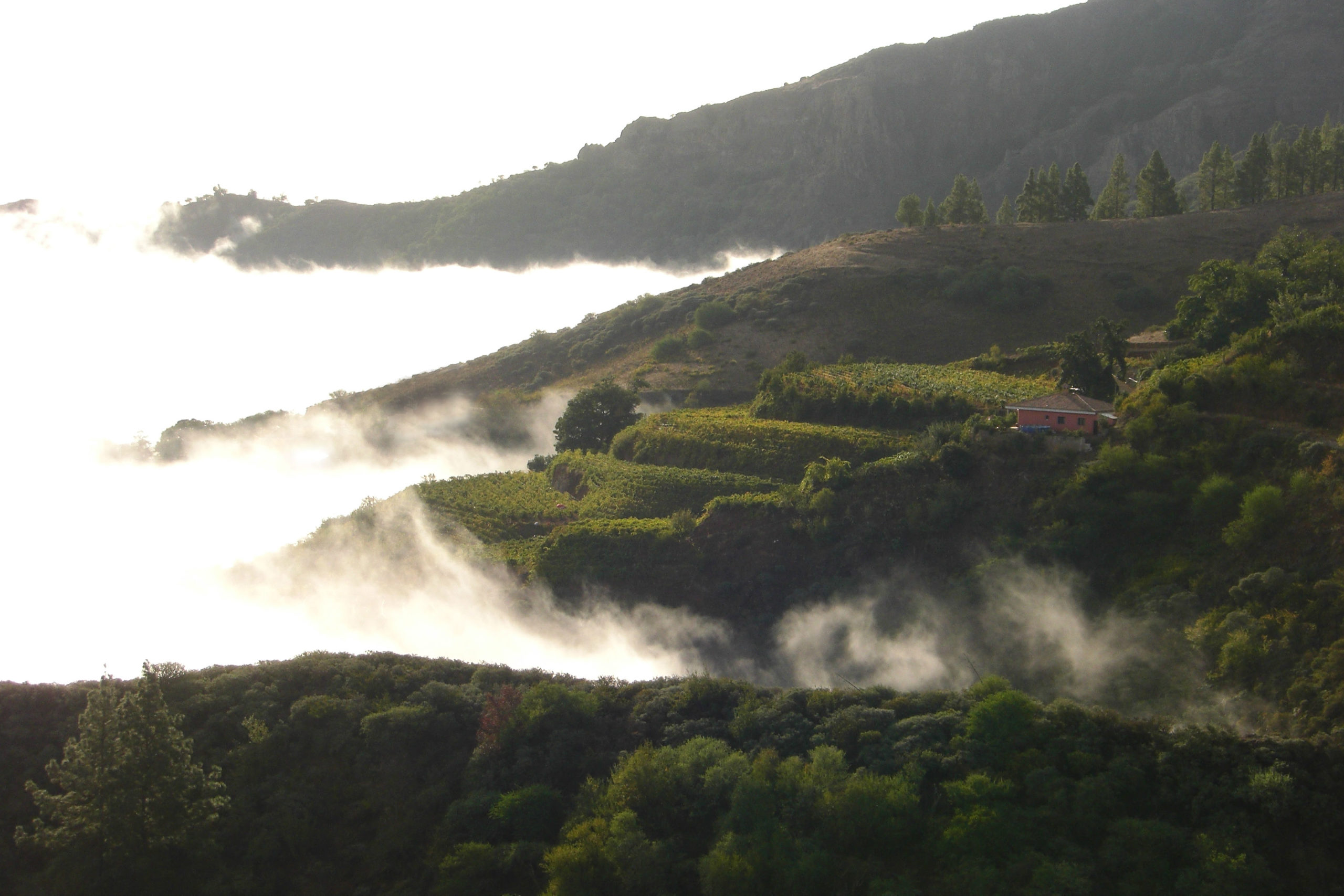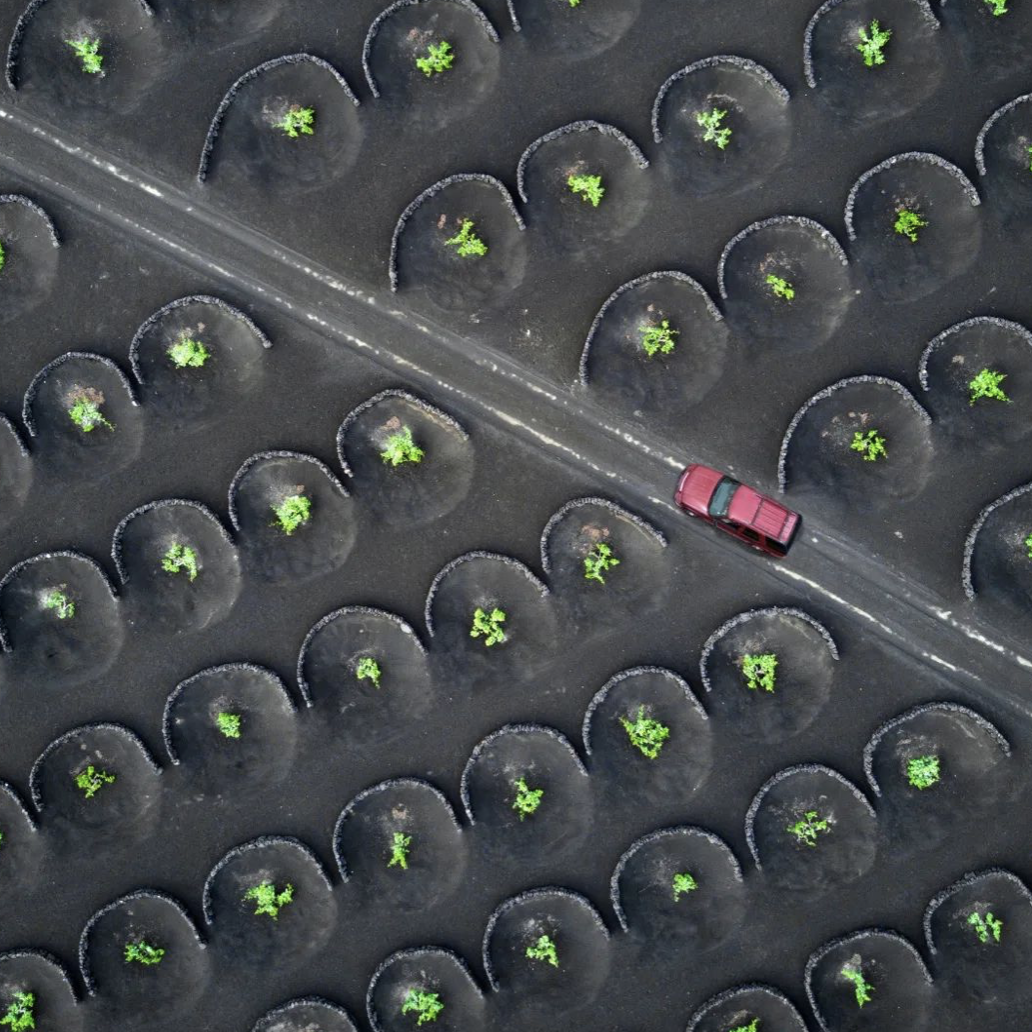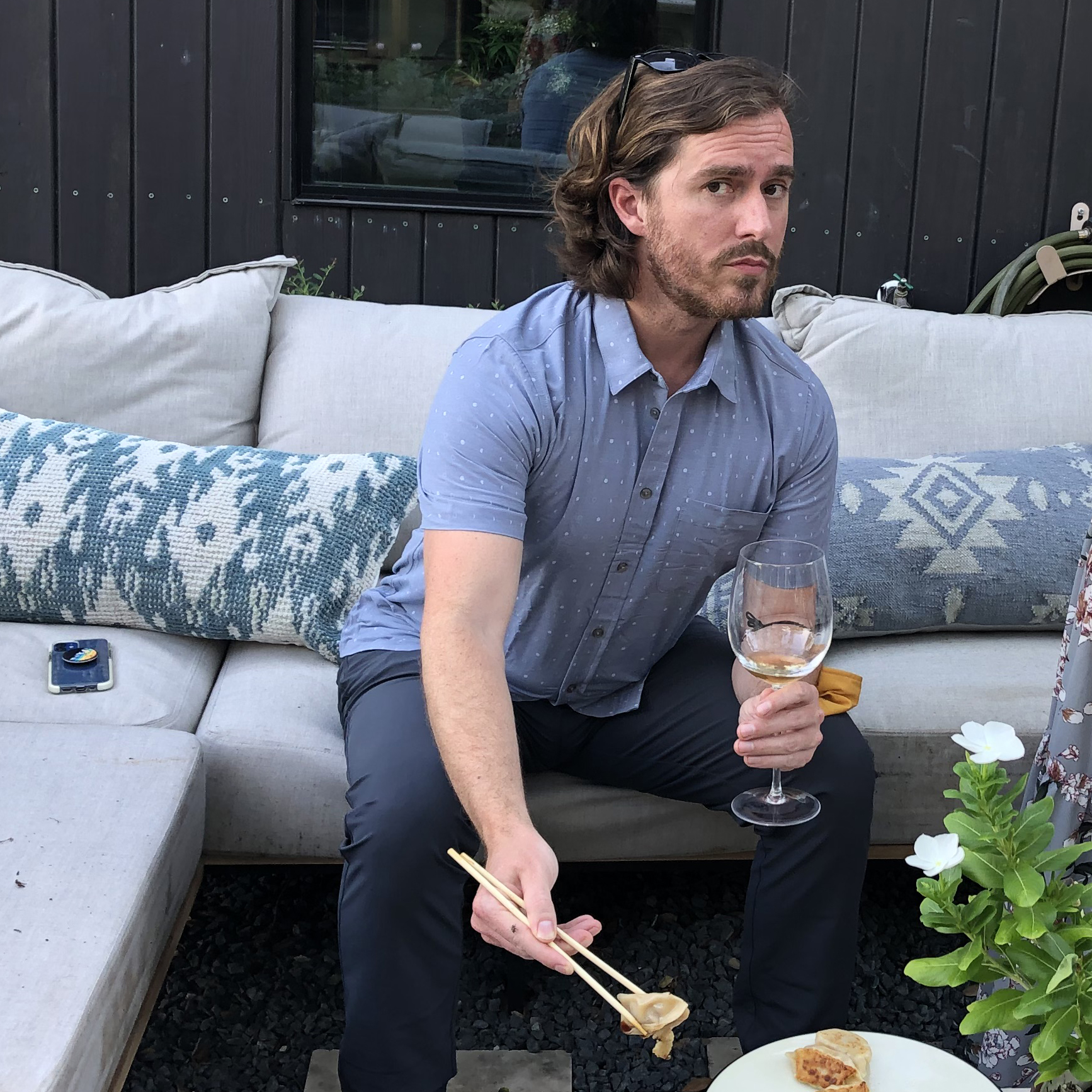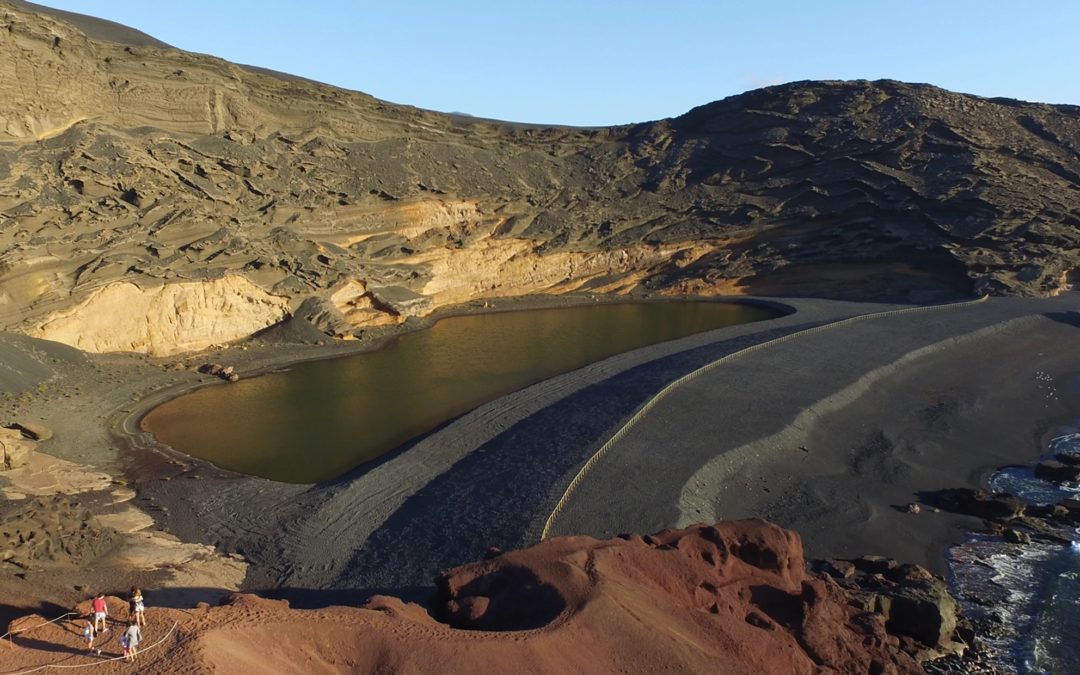Part 2
By Hutch Hill

Photo courtesy of Frontón de Oro
On day four we hopped a quick flight to Gran Canaria, an island known for its world class beaches, consistent surf, and the camels that tourists ride over the picturesque dunes. Instead of visiting any of those attractions however, we drove up and around the giant volcanic cone that forms the center of the island to Frontón de Oro, a small family-run winery with vineyards in and around 3000 feet above sea level. For me, perhaps no other producer personifies the wineries of the Canaries quite as much as Fronton de Oro. The character of the winery (as well as their wines) is marked by both humility and extravagance.
The humility comes from the people. Established in the seventies by Antonio Ramirez who planted just a small section of the remote farm to vines for the family’s consumption, they did not begin selling their wines locally until the next generation took over in the late 1990s. As finances have allowed, the family has added small plot after small plot of the difficult to cultivate land to slowly increase the (still small) volume and variety of their production. It is truly a family affair from planting to production to sales, and the closeness of their own personal labor can be sensed in all their wines.
The extravagance comes from the location and the deliciousness of their drinks. To stand in these vineyards above the odd wispy cloud and look out over paradise below—the terraced vineyards leading down to cliffsides and then to those shining golden beaches and tropical blue-green water—calls to question how any one place could be so extraordinary.
Tasting through their wines, many of which are of a tiny production, the style of the house is clear: purity of fruit with the balance that all that sunshine and all that altitude provide. The Frontón de Oro Tinto is peppered dark fruits, with an earthy and floral nose of the generously juicy mouthfeel. Wants some jamon to be enjoyed with it.

Photo Courtesy of Los Bermejos
LANZAROTE – Los Bermejos
For our last winery visit, we took another island jumper flight to the virtually barren, black moonscape of Lanzarote, the otherworldly island that is only 67 miles off the African coast, and home to the much sought after wines of Los Bermejos.
A massive volcanic explosion in 1730 (that lasted for six years!) blanketed the island in lava and ash four meters deep, essentially obliterating life across the island. Consequently, 280 years later, each vine must be planted in a deep hole or hoyo that breaks through that infertile volcanic crust of petrified lava to the organic matter that can nourish it from below. The hoyos also provide early and late-afternoon relief from the sun, as well as from the wind, which is so ferocious that each hoyo is surrounded by rock walls for added protection.
The result is something that looks like an astral farm from a science fiction book. Giant symmetrical holes arranged in rows, dug into the fields of black pumice, each with a single, gnarled and rather feeble-looking vine struggling for life at the bottom of each hole.
It makes someone seeing it for the first time turn to their nearest compatriot and say simply: “Uhmm, wait. What?”
Not mentioned yet as well, is that rainfall is also impossibly scarce, so much so that all plant-life on the island must struggle to survive in such harsh conditions. Quite obviously all the vineyard work must be done by hand, and the yields are miniscule, essentially a bottle per vine. All of these conditions bring to mind the old adage of whether “the juice is worth the squeeze.” By all reasonable considerations one would say that it is not…that is, until one is afforded the pleasure of drinking the wines of Los Bermejos.

Such pleasures are too numerous to mention in full, but I will highlight here the Diego Seco, a puckeringly dry and mineral white with a wonderful texture that is saturated with apple and stone fruits. We also tasted side-by-side the Listán Negro Traditional and the Listán Negro Carbonica (pictured here, respectively) for a wonderfully educational look at how the different fermentation techniques effect the wines. Both were delicious in their own right and some of the best representations of the varietal on our trip.
Perhaps Bermejos is best known in circles around the world however for their Rosado and the Malvasía Naturalmente Dulce. The latter is a solera of late harvest Malvasía for the maximum expression of that varietal, with aromas and tastes of grapefruit marmalade and some of the characteristics of Sauternes—though obviously there is no botrytis on these vines. The Rosado has quickly become one of the most sought after wines we carry, an unusual fact for a rosé from such a little known appellation. In truth the wine is rearrange-your-brain good, with flavors like salted watermelon and multitudes of herbs. During production they remove the Listán Negro lees (which can impart unwanted characteristics) and replace them with Malvasía lees to complete the process. Such wondrous sorcery.
If you have the opportunity, come taste a legend while it’s still being made.

Hutch Hill is Serendipity’s Senior Vice President of Sales & Portfolio Management. He has been with the company for over four years and has been known to enjoy a dumpling or two, on an occasion.
Read Part 1

